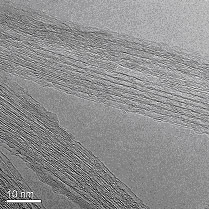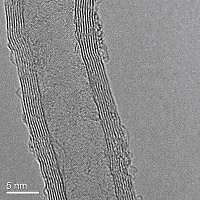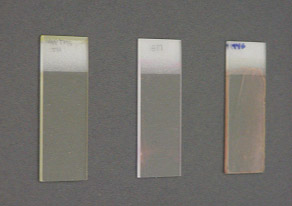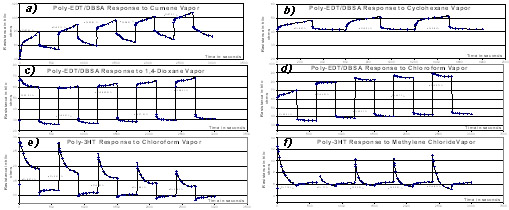|
Basic and Applied Chemistry &
Nanotechnology
Our ability to engineer tunable application-specific
mechanical, thermal and optoelectronic properties and even novel
phenomena into materials at the nanoscale, and in formatting these
properties so that they are maintained at the macroscale, provides
a platform for the creation and commercialization of a new class
of advanced materials that harness superior multifunctional and
tunable efficiencies.
|
 |
 |
|
High Resolution TEM
nanographs of Single Walled Carbon Nanotubes being used for
high resolution Raman and THz studies at Π |
High Resolution TEM
nanographs of Multi Walled Nanotubes being used for NIR,
Raman and THz studies at Π |
Π's expertise in angstrochemistry®, which stands for the
angstrom-scale "bottom-up" integration of properties into
molecular structures using an armamentia of multi-step
wet-chemistry methodologies and techniques, enables the creation
of smart organic precursors and building blocks, which, in
conjunction with our expertise in materials science and
engineering, can be used in the creation of a host of
nanostructured composites, fibers, coatings, surfaces and other
materials tailor-made to provide high performance capabilities in
technologies such as:
- EMI Shielding and Radar Absorbing Materials,
- Anisotropic Temperature-Dissipating Coatings/Materials,
- Multimodal Biological, Chemical, And Health Sensors,
- Morphing and Electrically-Induced Cloaking,
- Wavelength-Obscuring Optoelectronic Materials and Devices,
- Molecularly Engineered Materials, Nanostructures And
Chemicals,
- Organic Memories and Photovoltaics,
- Catalyst Supports,
- Nanoporous Filters for Air and Water Filtration,
- Electronic and Magnetoelectronic Materials,
- Selectively-Derivatized Surfaces,
- Advanced Composite Materials
|
 |
|
Glass surface modification and
derivatization at Π, pending material characterization |
Electronic Noses
Π develops sensor devices which show high optoelectronic
sensitivity, selectivity and reliability towards the real-time
monitoring of volatile or trace amounts of air/water borne
chemicals, pathogens or physical properties such as strain and
pressure. The selectivity of these materials could be further
enhanced through the use of multivariate statistical methods, and
can be automated via the use of pattern recognition systems.
Through the integration of these sensory materials into other
solid structural composite elements, coatings, fibers, substrates
and fabric substrates they can serve as electronic noses for the
monitoring of hazardous materials within land/sea air
environments. They can also be used in other platforms such as
intra- or extracellular medical health indicators for plants and
animals, or as composite-material health indicators for materials
such as structural materials. Based on expertise and technological
know-how, Π has developed the ScentLogix™ NanoRhino®, a suite of
organic materials that will chemically or optoelectronically
interact with sub-ppm levels of volatile organic compounds in a
qualitative and quantitative manner and, as such, can be tailored
for use as sensory elements of existing and emergent electronic,
mechanical and optical detection systems.
|
 |
|
An illustration of electronic nose
activities at Π |
Biological Detection
Pi is at the cutting edge of innovation in the field of
biological detection, particularly in its approach of the subject.
Our “convergent science” R&D approach uses the olfactory prowess
of canines in its foundational investigations in biological
olfaction and olfactory detection; this is because the olfactory
sensitivity and search-and-detect capacity of K9’s are better than
the best detector instruments available, and the final response of
a K9 to a detection decision represents an interesting “output” of
interpretations from a living CPU, i.e., the brain, rather than
outputs from patches of nose cells or of images of brain sites
that are simulated and acquired artificially. An improved
knowledge base in structure-odor relationships and the use of a
convergence of organic syntheses, analytical chemistry,
neurophysiology and bioanalytical search-and-detect methodologies
in understanding the rudiments of olfaction has resulted in the
release of the ScentLogix™ K9 Series of ScentKits for Explosives
and Narcotics Detection, The world's first scientifically
developed, purpose-built, multiplatform scentkits for the
evaluation and training of detection K9’s.
|